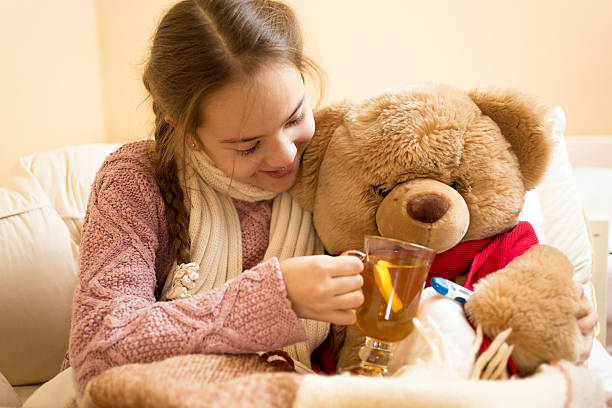Today I’d like to talk to you about “Is It Safe For Kids To Drink Green Tea?”. Green tea has fascinated tea lovers for generations due to its vibrant color and subtle taste. In addition to being refreshing, it has a long history and potential health advantages. This article will explore the mysteries of green tea, with a focus on its suitability for children.
What exactly is green tea? Green tea that is produced by the Camellia Sinensis plant, which also contains black tea, white tea, and oolong tea. However, what makes green tea unique is its limited oxidation process. The leaves are picked, quickly treated with steam or pan-fried to stop oxidation, and then rolled and dried. This limited processing helps maintain the tea’s vivid green color and delicate flavor.
Green tea is strongly present in Asian cultures, particularly China and Japan. Early Chinese writings mention green tea from as far back as the 8th century, highlighting its healing properties and advocating for its consumption. Over time, it became an essential part of traditional tea ceremonies, symbolizing purity, harmony, and mindfulness.
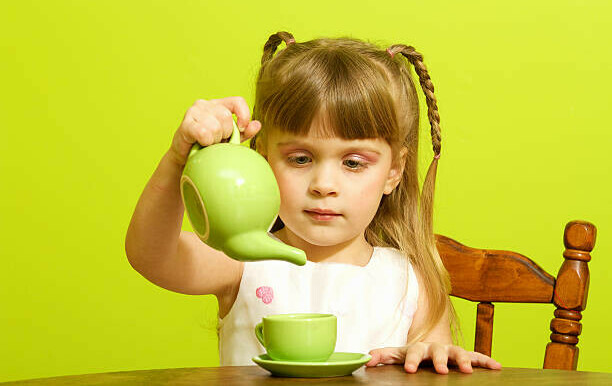
So, is it safe for children to consume green tea? Many parents are interested in and concerned about the safety of green tea for children. Although green tea has potential health benefits, it contains caffeine and other bioactive compounds. This is what experts have to say:
- Caffeine Content: Green tea has some caffeine, although the levels are lower than black tea or coffee. Caffeine may impact children differently, so it’s essential to use it in moderation. If you’re giving green tea to young children, consider using decaffeinated green tea.
- Antioxidants: Green tea is rich in antioxidants, including catechins and flavonoids, which can support overall health and boost the immune system. It’s important for children to consume it in moderation to avoid overconsumption.
- L-theanine: This amino acid in green tea encourages a sense of calm and mental sharpness. It offsets the stimulating impact of caffeine, transforming green tea into a soothing drink.
- EGCG (Epigallocatechin Gallate): EGCG, linked to numerous health benefits, is a powerful antioxidant that might aid in defending against oxidative stress and inflammation. It is essential to emphasize moderation once again.
Let’s delve deeper into the significant components of green tea breaking them down:
- Caffeine: Despite green tea containing less caffeine than coffee, tracking your consumption is essential. Children have different tolerances to caffeine, so if you’re concerned, consult a pediatrician.
- L-theanine: This distinctive compound encourages relaxation without inducing drowsiness. It complements caffeine harmoniously.
- EGCG: The exceptional antioxidant in green tea, EGCG, promotes overall well-being.
Herbal Tea vs. Green Tea for Kids: Herbal infusions, like chamomile or mint, are caffeine-free and easy on children’s stomachs. Nevertheless, the antioxidants found in green tea offer an additional health boost. Consider serving herbal infusions at bedtime and green tea during the day.
As we delve into green tea, we’ll examine its advantages, possible drawbacks, and innovative ways to include it in your child’s daily routine.
The Many Shades of Green: Evaluating the Benefits and Risks for Kids
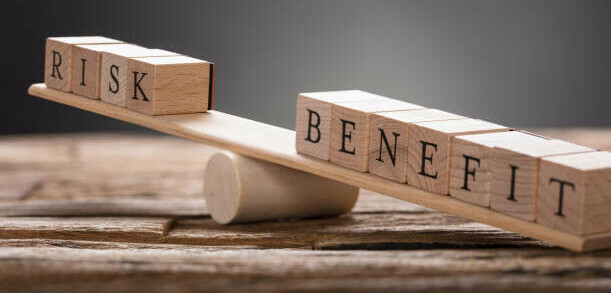
Green tea provides a special mix of relaxed and calm alertness, thanks to its two main elements: caffeine and L-theanine working together in synergy. While caffeine gives a mild energy lift, L-theanine encourages calmness without causing drowsiness. Together, they create a balanced state that helps the mind stay focused and relaxed.
For kids dealing with anxiety or trouble focusing, green tea might provide relief. The L-theanine helps calm nerves, while the slight caffeine boost improves alertness. It’s like a gentle push to stay attentive without the jittery feeling that comes with coffee.
New studies indicate that green tea’s antioxidants, particularly EGCG (epigallocatechin gallate), might support memory and cognitive function. These compounds help shield brain cells from oxidative stress and inflammation. Encouraging your child to enjoy green tea could be a pleasant way to enhance brain health.
When we compare regular green tea to Matcha green tea, we can see that Matcha, the bright green powdered tea used in traditional Japanese tea ceremonies, has gained popularity globally. So, how does it stack up against regular green tea? Here’s a brief comparison:
Matcha: Created from shade-grown tea leaves, matcha is abundant in chlorophyll and antioxidants, offering a more concentrated dose of nutrients compared to regular green tea. Its earthy flavor and vivid green color are appealing to children.
Regular Green Tea: The traditional green tea we are familiar with is steeped from whole or broken tea leaves. It has a more subtle taste and contains less caffeine than matcha. Regular green tea is adaptable and complements meals well.
I know you are waiting to know about potential risks. While it’s true that green tea has many benefits, it’s important to use it in moderation. Here are some things to keep in mind:
- Caffeine Levels: Keep an eye on how much caffeine your child is getting. Although green tea doesn’t have as much caffeine levels as coffee and has much less levels, consuming too much can still cause restlessness or difficulty sleeping.
- Individual Reactions: Kids can react differently to caffeine. Some may be more sensitive, so watch how they respond.
- Fluoride Levels: Green tea naturally contains fluoride, which is good for teeth. But too much could lead to dental fluorosis. Make sure your child practices good oral hygiene.
It’s essential to think carefully about your child’s specific needs and preferences when introducing green tea into their routine.
The Optimal Age and the Perfect Brew: Introducing Green Tea to Kids
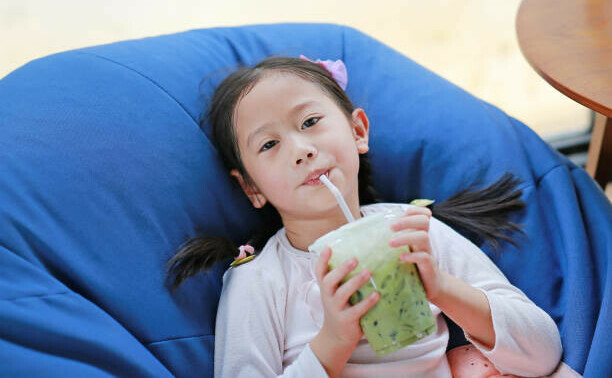
Learning more about green tea is important to determine the appropriate age for children to begin consuming it. The suitable age for children to safely drink green tea varies based on individual factors. While some children may handle it well, others may be sensitive to caffeine. As a general rule, consider introducing green tea to children who do not experience any negative effects, such as hyperactivity, trouble sleeping, or lack of concentration. Always seek advice from a pediatrician before making any changes to your child’s diet.
- Rooibos Tea: a caffeine-free herbal infusion, is a safe option for kids with a mild, earthy flavor. It offers a nutritious alternative to sugary beverages.
- Chamomile Tea: with its very well-known calming properties, can soothe upset stomachs, ease nausea, and help manage cold symptoms, making it a great choice for children over 2 years old.
- Mint Medley or Peppermint Tea: herbal teas that can alleviate stomach discomfort, sore throats, and coughs, are refreshing and suitable for kids.
When preparing tea for children, it’s important to steep it for a shorter time and serve it at a cooler temperature to prevent bitterness.
Consider the following advice when buying green tea for children to ensure that it has lower caffeine content and is suitable for kids:
- Caffeine Levels: Look for teas with reduced caffeine content. Herbal infusions such as rooibos and chamomile are great options.
- Quality: Opt for high-quality, pure, organic teas to guarantee safety.
- Flavor Preferences: Get your child involved in choosing flavors they like. Fruity or mild options are often appealing to kids.
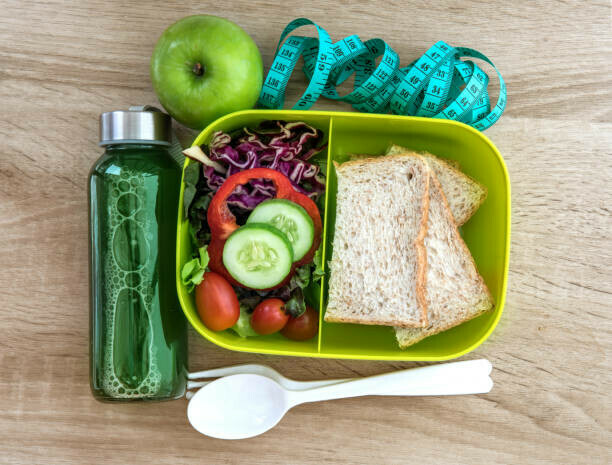
Incorporating green tea into school lunches in Japan is due to its exceptional health benefits that should not be overlooked.
- As part of your child’s school lunch, include a thermos of chilled green tea. It’s a revitalizing and hydrating beverage that complements a variety of meal choices. Green tea (matcha) holds significant cultural importance in Japan in daily life.
- Add matcha-flavored snacks such as cookies, rice cakes, or smoothies to your child’s lunchbox. These treats taste fantastic and offer antioxidants and a touch of Japanese culture.
Moreover, there are more fun ways to incorporate green tea into kids’ diets by crafting kid-friendly green tea blends and dishes:
- Blend banana, yogurt, honey, and matcha powder for a vibrant and nutritious smoothie.
- Combine cooked rice with a pinch of matcha powder, shape it into small balls, and fill with favorite ingredients like tuna or pickled plum for Green Tea Rice Balls (Onigiri).
- Create no-bake energy bites by combining oats, almond butter, honey, and matcha powder.
Remember to let your kids enjoy green tea mindfully and in appropriate amounts. Moderation is key to its delightful addition to your child’s diet.
Precautions and Preparation: Tips on Serving Green Tea to Kids

Parents often have concerns about potential side effects when thinking about giving green tea to their kids. Here’s what you should keep in mind:
- Increased Activity: Green tea contains caffeine, although in smaller amounts than coffee. While some kids may be sensitive to caffeine and become more active, others may not. Monitor your child’s reaction and make adjustments as needed.
- Trouble Sleeping: Caffeine can disturb sleep patterns. Avoid giving green tea to your child close to bedtime to prevent sleep issues.
- Other Adverse Effects: Some children may experience stomach discomfort or mild digestive problems. Start with small servings and watch for any negative reactions.
Before adding green tea to your child’s diet, it’s very important to seek guidance from a professional and consult a pediatrician. Pediatricians are the only ones who can asses and provide personalized advice based on your child’s age, health, and specific requirements and address any specific concerns you may have. So, please don’t disregard this.
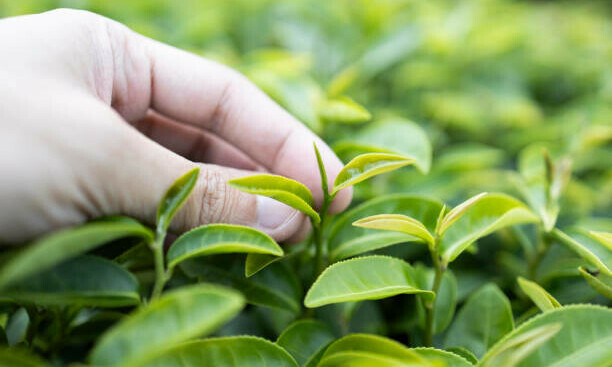
When you’re choosing green tea, it’s important to prioritize quality. Here are some guidelines:
- Choose organic green tea to steer clear of pesticides and chemicals.
- Whole-leaf tea generally delivers superior flavor and more antioxidants than bagged tea. However, high-quality bagged teas are convenient and still offer health benefits.
- When selecting green tea, consider your child’s flavor preferences. Some children may prefer milder green teas, while others may enjoy stronger flavors.
Also, you have to consider some guiding principles for green tea consumption, such as:
- Serving Size: Start with a small cup (4-6 ounces) to assess your child’s tolerance. If well-tolerated, gradually increase the serving size.
- Frequency: Limit green tea consumption to 1-2 cups per day for children. Remember that other sources (like chocolate or soda) also contribute to caffeine intake.
Moreover, you have to watch out for how to introduce green tea gradually into your kid’s diet by following the following:
- Dilute It: Mix green tea with herbal infusions or water to reduce caffeine concentration.
- Flavorful Blends: Create kid-friendly blends by adding fruit slices or a touch of honey.
- Cultural Context: Share the cultural significance of green tea with your child. Explore Japanese tea ceremonies and their reverence for matcha.
Green Tea in a Child’s Cup: Recommendations and Creative Recipes
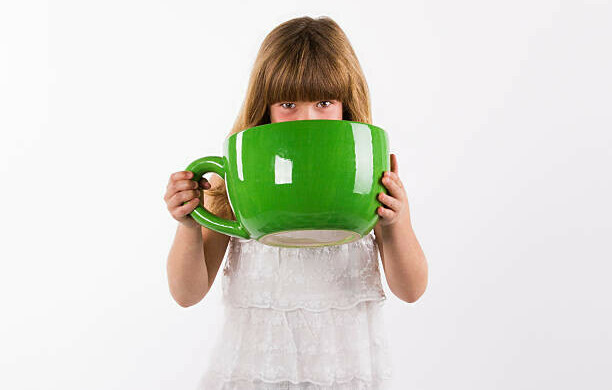
Now, we come to this tackling question: Organic vs. Decaffeinated Green Tea: What’s Best for Kids?
Organic Green Tea:
Organic green tea follows strict organic principles during cultivation. It is grown without the use of harmful synthetic fertilizers, pesticides, or herbicides. The leaves are processed to maintain their natural character, resulting in a fresh and flavorful brew. From a health perspective, organic green tea contains a higher antioxidant and is free from synthetic residues.
Decaffeinated Green Tea:
Decaffeinated green tea can be a very good pick for children sensitive to caffeine. Seek out types that have been decaffeinated using the carbon dioxide method. Despite retaining antioxidants, it offers a gentler taste. It’s important to remember that moderation is crucial, even with decaf.
There are lots of flavorful and playful teas that your kids can try out and will love:
- Fruity Bubble White Tea: Delight your child’s tastebuds with this playful blend. It’s lightly sweet and refreshing, perfect for warm afternoons or as a healthy gummy bear treat.
- Berry Blue Organic Herbal Tea: A vibrant infusion is bursting with flavors. Serve it iced or warm—it’s a hit either way!
- Peach Mango Organic White Tea: The juicy sweetness of peach and mango makes this tea irresistible. Kids will love its tropical twist.
- Sweet Sangria Organic Green Tea: A kid-friendly version of the classic sangria. Fruity, colorful, and packed with antioxidants.
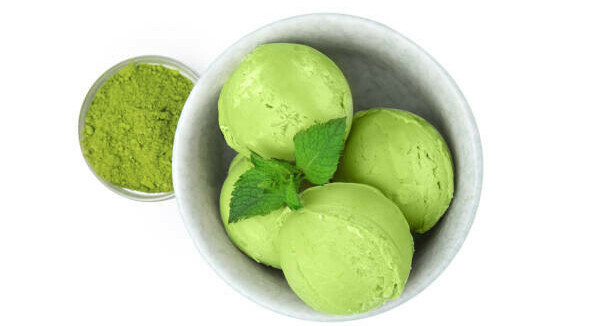
We can find the balance of engaging green tea in recipes designed for children to be delicious and nutritious at the same time:
- Iced Green Tea with Mint and Honey: Add honey, mint, and lemon slices to green tea for a refreshing twist. Perfect for brunch or warm days.
- Matcha Green Tea Ice Cream: Creamy, earthy, and fun; kids adore it’s matcha-infused treat. Plus, it’s moderately healthy!
- Spicy Green Tea Noodles: For savory cravings, try these herby noodles. The spicy sesame sauce adds Asian flair.
- Starbucks Pink Drink (Homemade Version): Strawberries, berry green tea, and chilled coconut milk create a fruity, milky delight. Just like the real thing.
Frequently Asked Questions: Answering Common Queries
Is Green Tea Good for Health?
Absolutely! Green tea contains high levels of antioxidants, assists in weight loss, lowers cholesterol, and supports heart health. Traditional knowledge aligns with contemporary scientific findings.
Does Green Tea Help in Weight Loss?
Green tea might assist in weight loss by increasing metabolism and enhancing fat burning. It is a wholesome, natural option suitable for both children and adults.
How to Identify Good Green Tea?
After steeping, the leaves should maintain their natural green hue. The flavor should be vibrant and full of freshness.
Green tea, when consumed mindfully, can make a great addition to your child’s daily routine.
I would love to receive your comments down below, in case of any.

